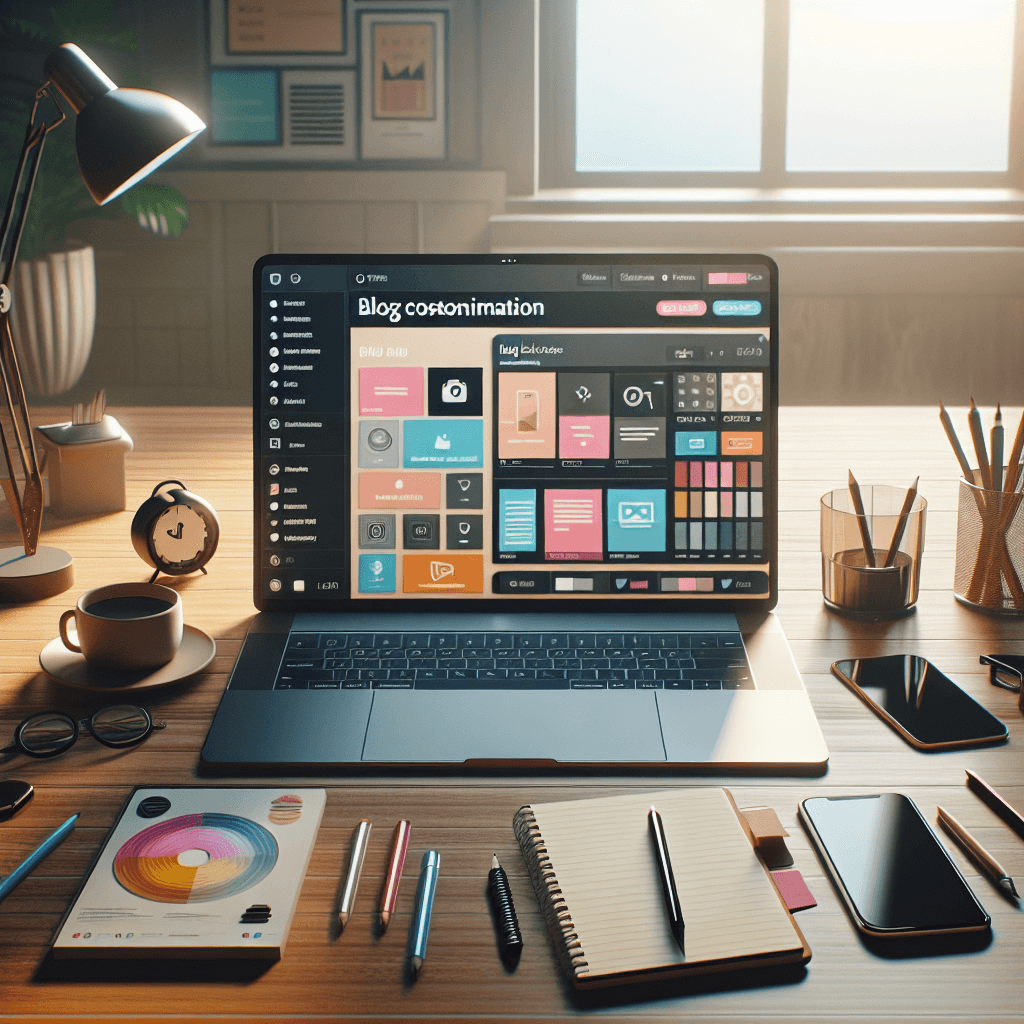Ultimate Guide to Blog Customization: Boost Your Success

Introduction to Blog Customization
Blog customization is a crucial component for anyone looking to improve their online presence. Whether you run a personal blog or a professional blog website, customizing your blog effectively can make a significant difference in your success. In this ultimate guide to blog customization, we'll explore the basics, benefits, best practices, common challenges, and solutions to help you create a blog that stands out and serves your audience effectively.
Understanding the Basics of Blog Customization
Blog customization refers to the process of tailoring the appearance and functionality of your blog to meet your specific needs and those of your audience. This includes changing themes, layouts, colors, and fonts, as well as optimizing for user experience (UX).
Key Components of Customization
-
Themes and Templates: Choosing the right theme is the first step in blog customization. A theme dictates the overall look and feel of your blog. Popular platforms like WordPress offer a plethora of free and premium themes that you can choose from based on your niche and audience.
-
Layout and Structure: The layout of your blog should be intuitive. Consider using a grid or column layout that allows users to navigate easily. For instance, a sidebar can house important links and recent posts, improving user engagement.
-
Color Schemes and Fonts: Colors evoke emotions. Using a consistent color palette that aligns with your brand can improve recognition. Similarly, selecting readable fonts is vital; avoid overly ornate fonts that may deter readers.
-
Widgets and Plugins: Adding widgets and plugins enhances functionality. For example, social media sharing buttons can increase post visibility, while SEO plugins can help improve your blog posts.
Key Benefits and Features of Blog Customization
Customizing your blog offers several benefits that can lead to increased readership and engagement.
1. Improved User Experience
A well-customized blog is more user-friendly. When visitors find what they are looking for quickly, they are more likely to stay longer and engage with your content. For instance, a blog with a search feature and categorized posts allows readers to find topics of interest swiftly.
2. Enhanced Branding
Customization allows you to establish a unique brand identity. Consistent visuals and messaging across your blog help readers recognize your brand. For example, if you have a food blog, using earthy tones and appetizing images can improve your brand's appeal.
3. Increased Engagement
Customized blogs often see higher engagement rates. By incorporating interactive elements like comment sections, polls, or quizzes, you can encourage readers to participate actively. This interaction builds a community around your blog.
4. Better SEO Performance
Search engine optimization is essential for increasing your blog's visibility. Customizing your blog with SEO best practices—like optimized URLs, meta descriptions, and alt text for images—can help improve your search rankings. According to a study by HubSpot, blogs that are SEO-optimized can attract significantly more traffic than those that are not.
Best Practices and Tips for Blog Customization
Customizing your blog can be overwhelming, but following these best practices can help streamline the process.
1. Define Your Audience
Before making any changes, understanding your target audience is crucial. Conduct surveys or use analytics tools to gather data on your audience's preferences. This information can guide your customization choices.
2. Focus on Mobile Optimization
With a significant number of users accessing blogs via mobile devices, ensuring your blog is mobile-friendly is paramount. Use responsive design themes that adjust to different screen sizes, ensuring a smooth experience for all users.
3. Keep It Simple
While customization allows for creativity, simplicity is often more effective. A cluttered blog can overwhelm visitors. Maintain a clean design with ample white space, making it easy for readers to focus on your content.
4. Regularly Update Your Blog
Customization is not a one-time event. Regularly updating your blog with fresh themes, layouts, and content keeps your audience engaged. For instance, consider seasonal themes or timely content that resonates with current events.
5. use Analytics
Use tools like Google Analytics to track user behavior on your blog. Analyze which layouts and features attract the most engagement, allowing you to make data-driven decisions for further customization.
Common Challenges and Solutions in Blog Customization
While customizing your blog can yield fantastic results, it can also present challenges. Here are some common issues and how to address them.
1. Technical Difficulties
Many bloggers encounter technical issues during customization, especially if they lack coding knowledge. To tackle this, consider using user-friendly platforms like WordPress that offer drag-and-drop features. Alternatively, hiring a professional can save time and prevent frustration.
2. Over-Customization
A common pitfall is over-customizing, which can lead to a confusing and inconsistent user experience. Stick to a coherent theme and layout, and only add features that genuinely improve the user experience.
3. Keeping Up with Trends
Blogging trends change rapidly. To stay relevant, subscribe to industry newsletters or follow influential bloggers in your niche. This will help you stay informed about the latest design trends and best practices.
4. Measuring Success
Measuring the success of your customization efforts can be tricky. Set clear metrics before making changes. For example, track page views, bounce rates, and social media shares to gauge the impact of your customizations.
Conclusion: Summary and Next Steps
To wrap up, blog customization is an essential aspect of creating a successful blog. By understanding the basics, recognizing the benefits, following best practices, and addressing challenges head-on, you can significantly improve your blog’s visibility and user engagement. To take the next steps, start by identifying your audience's needs and preferences, then put in place changes gradually to see what works best.
For further reading, check out Moz's SEO Starter Guide for insights into optimizing your blog for search engines. Also, you can find inspiration from Medium, a platform known for its clean and customizable blog layouts. Finally, visit Go Monster Marketing for more resources on digital marketing strategies that can complement your blog’s success.